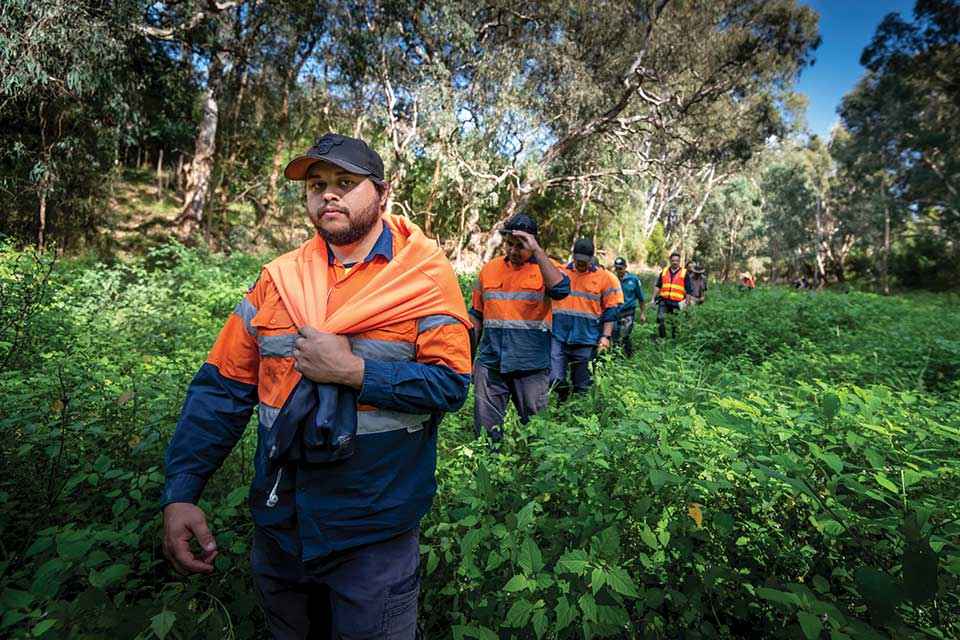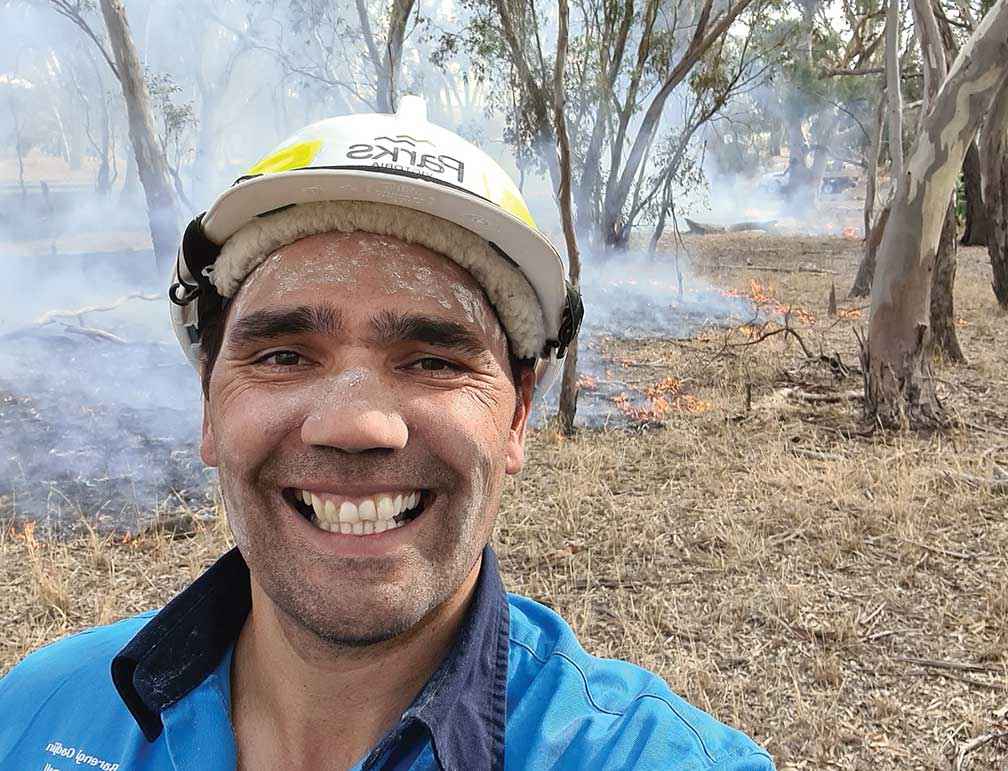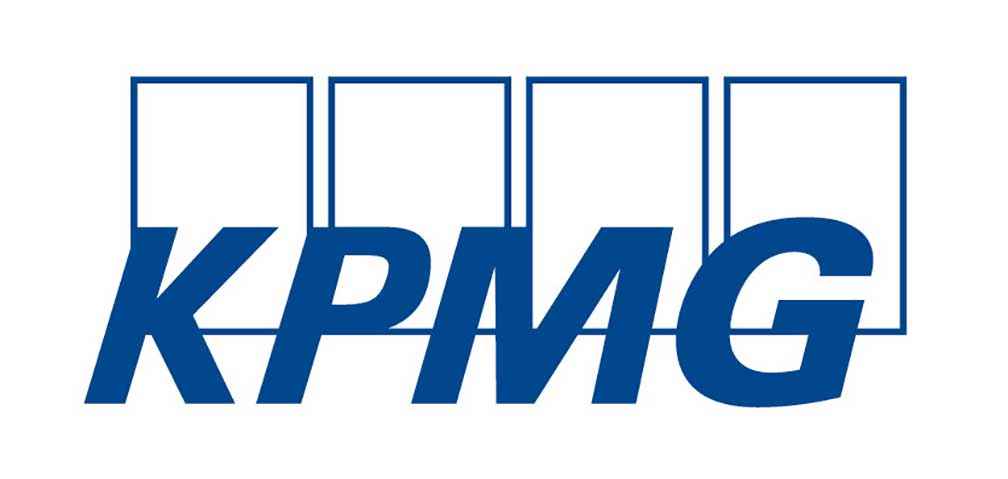Victorian Landcare Magazine - Spring 2021, Issue 82

The KPMG Indigenous Land Management Award acknowledges an outstanding Indigenous community group or individual who is working towards improving land use or protecting an area on behalf of the community.
The Wurundjeri Woi Wurrung Cultural Heritage Aboriginal Corporation’s Narrap Team have had a huge impact on natural resource management on Wurundjeri Country within the Port Phillip and Western Port region as they bring Indigenous land management practices back into use.
The Narrap Team was founded by Uncle Dave Wandin in 2012 as a works crew that had four casual staff. It has now grown to a crew of 20 full-time employees including a women’s crew. The team expects to expand to 35 employees by 2023.
The Narrap Team looks after Country returned to Wurundjeri including Sunbury Rings, Mt William Stone Axe Quarry and Nungunala in Healesville. They also contract their services to councils, Port Phillip and Westernport CMA, Landcare and Friends groups, DELWP and Melbourne Water, where they have preferred supplier status.
Culture and Country come together
The team has developed ongoing relationships with many community groups. Their practical skills in restoring and regenerating landscapes, establishing biodiversity corridors, fencing, managing feral animals and pest plants, controlling environmental weeds and ecological burns are complemented by site visits by Elders where discussions and learnings on culture and Country come together.
The Darebin Creek Management Committee, Merri Creek Management Committee and Friends of Steele Creek and Cairnlea Conservation Committee of Managements have multi-year projects with the Narrap Team.
The team works from a dedicated depot in Healesville, Nunganala, which is also being developed as an Indigenous land management demonstration site with a nursery and bush foods focus.
Team leader Sean Hunter worked for Parks Victoria for sixteen years before joining the Narrap Team. Sean has been focusing on skills training for the team and on establishing the women’s team.
“There were no women on Narrap when I started here and now there are seven. The women’s crew works independently on different projects and sites as well as joining the wider Narrap Team. Hume and Moreland Council provided support to help us establish the women’s crew that will look after women’s places on Wurundjeri Country,” Sean said.
Hot interest in cool burns
Narrap Team members visited the north of Australia to relearn their skills in cool burns through the Firesticks Alliance. Cool burns are now a regular occurrence on Wurundjeri Country with 20 booked in for next spring. The team is training all its members in fire management (to a minimum of Certificate III in Conservation Management) and is establishing two full-time fire dedicated roles.
Forest Management Victoria has partnered with the Narrap Team for cultural burning at Macedon Regional Park in a five-year project. Darebin Creek Management Committee, Latrobe University and Melbourne Water will work with the team on Nangak Tambore, a project of respecting, sharing and looking after waterways, which involves three years of cultural burns.
There is a great deal of anticipation and curiosity about the impact cultural burns can make to degraded landscapes over time. The technique has only recently been revived on Country and it has been identified as a key tool in mitigating climate change as it promotes the reestablishment of indigenous plants and landscapes.
Knowledge sharing
According to Danny Redden from the Darebin Creek Management Committee, working with the Narrap Team has been invaluable.
“I think everyone in natural resource management recognises there has been a gap in respect to the cultural side of land management. It’s hard to understate the value of the Narrap Team’s work. Many of their burns have involved a community knowledge sharing component – traditional ecological knowledge they are in a process of discovering and relearning.
When you are given an insight into some of their knowledge of the land, it gives you goosebumps,” Danny said.
The Narrap Team is constantly challenged by the need to balance cultural protection with pressing environmental threats such as rabbit infestations and land degradation caused by weeds. There is often a community education aspect to their work as they help to build understanding of cultural heritage on Country.
The Friends of Steels Creek reported a boost in membership after locals attended cultural events led by Wurundjeri Elders, which are held alongside Narrap Team natural resource management projects.
Sean Hunter says the team has given regular ongoing employment to many Indigenous young people and showed them a career path that also strengthens their identity and builds their self-esteem.
“Our youngest team member is 18. It’s great to see them develop their skills and confidence. Some of our team members have had difficult backgrounds and working to heal Country is such a strong force for healing yourself. Many of us on the team are related so the support and connections we make with mob are really valuable,” Sean said.
Sean and the team have also been busy advising other Registered Aboriginal Parties on how to establish their own natural resource management teams.
The Narrap Team is an excellent example of Indigenous self-determination underlined by sound relationships, integrity, and passion for their work. The Narrap Team has put Indigenous natural resource management on the map in their region and transformed how the wider community view Country.
Damien Skurrie is a Wotjobaluk man working with his community to lead the Aboriginal management of Wotjobaluk Country.

Above: Damien Skurrie taking part in the annual Dyurrite (Mt Arapiles) Walpa Wanjip Burn-Fire workshop.
Damien is Natural Resource Management Program Manager for the Barengi Gadjin Land Council – representing the Wotjabaluk, Jaadwa, Jadawadjali, Wergaia and Jupagulk people across the Wimmera and Grampians regions. Damien coordinates the Walpa Gunga Dja Dulk (right burning to make Country good) project using community cultural burning workshops to demonstrate slower and cooler burns that support biodiversity and help to restore a balanced and healthy landscape. Damien engages Traditional Owners, Elders and youth in his natural resource management work and is a role model for his community. His understanding of the importance of cultural practices in caring for Country is empowering the next generation of Aboriginal leaders.

Above: Sponsor's logo for this Landcare Award